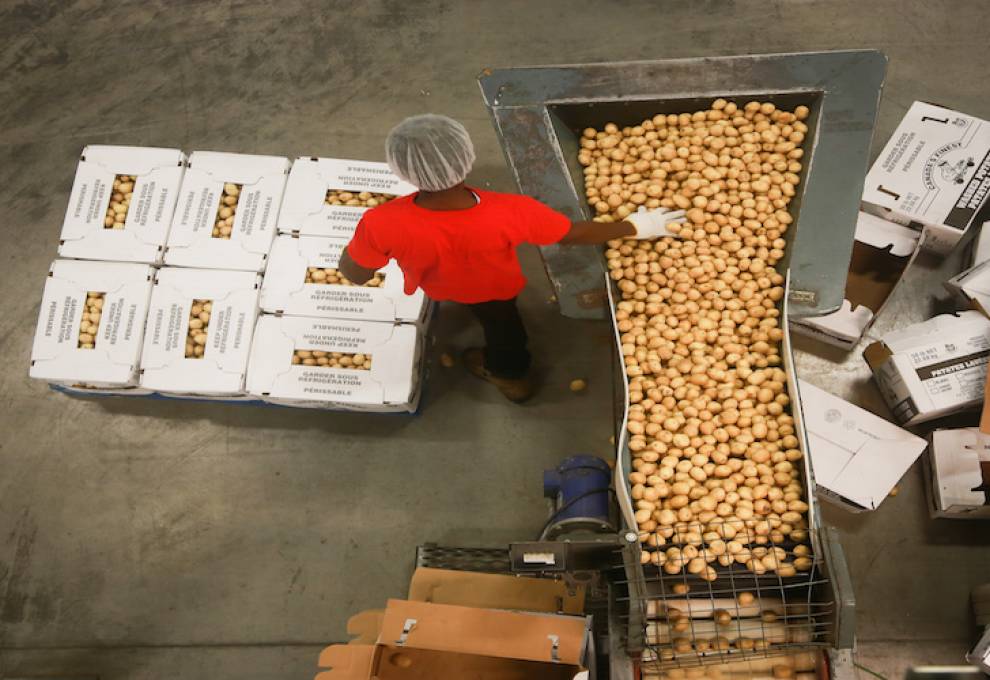
The COVID-19 pandemic has prompted some huge questions about federal support for agriculture.
Some of the biggest questions were raised in early May, when Prime Minister Justin Trudeau announced his sweeping $252-million farm and food aid program.
It included $50 million for what Agriculture and Agri-Food Canada claimed was the first-ever food surplus purchase program to help out food banks and other food aid efforts. Trudeau’s overall program was roundly criticized by growers and producers for being inadequate, given agriculture’s major contribution to the economy, let alone its importance to the everyday lives of consumers who rely on it for sustenance.
But the food bank program…well, that was another matter. Food banks were seeing record numbers of users who were desperate for help. Maybe this surplus purchase initiative could provide some assistance to them.
Time rolled on. Through the rest of the late spring and early summer, horticulture and other sectors were hammered by labour shortages related to the pandemic, which left many growers and producers in dire straits.
Fields went unplanted. Others couldn’t be harvested. Photos of produce being wasted, left rotting in the field appeared in the media, to everyone’s chagrin. The restaurant and hospitality industry stood still, leaving many producers without a key market for their food commodities.
The chasm between hungry Canadians and the food they so dearly needed was not being crossed. What was taking the food bank program so long to get up and running?
Finally in mid-August, after receiving applications mid-June to mid-July from food aid organizations proposing to help deliver the program, Ottawa rolled it out. It named eight participants – most notably, Food Banks Canada and Second Harvest -- to source and distribute perishable produce, meat, eggs and seafood piling up across Canada due to the COVID-19 pandemic.
At the announcement, held at a Quebec farm, federal Minister of Agriculture and Agri-Food Marie-Claude Bibeau called it a win-win, providing an estimated 12 million kilos of quality, nutritious, surplus food to Canada’s most vulnerable populations.
“Not only are we helping producers who cannot sell their goods to restaurants, but we are also aiding Canadians that have had to seek help from food banks,” she said. Urgent, high-volume, highly perishable surplus fruit, vegetables, meat, fish and seafood are the commodities that will be moved through the program.
Now, that’s great for those on the receiving end of this food, and agriculture always has to keep them in mind when criticizing an aid program. True, $50 million is not a lot to a multi-billion-dollar sector like agriculture. And certain commodities, particularly grains, are extremely bitter over what they call federal neglect throughout the pandemic. They call the amount of support farmers here receive a pittance compared to the gobs of cash U.S. farmers are receiving from their election-conscious president.
However, to the food bank organizations involved in distributing the surplus food, $50 million is golden.
“It leverages the deep supply chain expertise and knowledge the food banking network has, thereby helping those in Canada experiencing food insecurity in the most efficient manner,” said Chris Hatch, CEO of Food Banks Canada.
Lori Nikkel, CEO of Second Harvest, said the program will have a positive environmental, economic and social impact, by diverting healthy surplus food to communities, instead of becoming landfill waste.
“As an organization with the dual mission of ‘no waste, no hunger,’ Second Harvest is proud to participate in this integrated response to meet the needs of the agri-food sector and vulnerable Canadians,” she said.
Does it meet the needs of the agri-food sector? More than no program would, for sure. But I doubt if growers who bided their time waiting for the program to be implemented think so.
The same goes for food bank users watching produce go to waste. The program simmered too long.

Add new comment